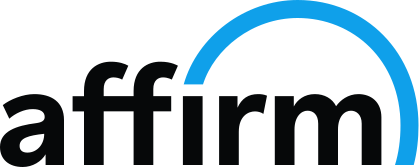 A consistently effective executive interviewing strategy needs to involve more than just arriving in a cool suit and reciting your resume. At the this level, interviews are strategic business discussions. And your credibility, leadership philosophy, and vision are under a microscope. To get the nod, it requires more than proving leadership ability. You need to show how you think, how you adapt, and how your leadership creates long-term value.
A consistently effective executive interviewing strategy needs to involve more than just arriving in a cool suit and reciting your resume. At the this level, interviews are strategic business discussions. And your credibility, leadership philosophy, and vision are under a microscope. To get the nod, it requires more than proving leadership ability. You need to show how you think, how you adapt, and how your leadership creates long-term value.
Executives can often make the mistake of preparing for interviews using the same methods they used earlier in their careers. However, those stakes are significantly higher now, and the approach must reflect that reality.
Master the Pre-Interview Landscape
A strong executive interviewing strategy begins well before the initial conversation. Executives must move beyond surface-level research. You’ll want to examine recent 10-K filings, quarterly earnings calls, investor presentations, industry analyses, and the like. Why? Well, these documents provide you with insight into strategic priorities, financial challenges, and the company’s competitive positioning. Understanding the broader industry and leadership transitions means you’re ready to anticipate concerns and tailor your responses accordingly.
According to a 2023 LinkedIn Talent Trends report, 75% of hiring managers stated that a candidate’s ability to speak knowledgeably about their business played a decisive role in the hiring process.
If executive interviewing involve multiple stakeholders, it is important to research each participant. LinkedIn profiles, published articles, and public interviews can reveal their leadership styles, focus areas, and departmental goals. This allows you to shape your responses in a way that lines up with their expectations and values.
Frame Your Leadership Philosophy with Intentionality
Hiring boards are way over receiving vague declarations of leadership style. They are looking for a defined and authentic leadership philosophy, as well as whether it has been tested across various challenges. So what should you do? Outline the values that guide your actions and support them with specific examples from your experience.
Construct stories that demonstrate how your leadership has generated results. It could be describing a restructuring effort that preserved morale. Or perhaps an expansion that maintained cultural consistency. Ensure your philosophy is evident in how you lead and decide.
Executive interviewing should involve emphasizing talent development can also move the needle for you. Boards value executives who cultivate internal talent and build leadership pipelines. So be sure to communicate how you have mentored high-potential employees, built succession plans, or retained top performers during turbulent times.
Show Strategic Depth and a Vision Beyond Day One
Executives are not hired solely for immediate results. Employers also tend to want leaders who understand emerging industry dynamics and are capable of shaping long-term success. So take the opportunity to blow them away by presenting a 3-to-5-year vision grounded in market awareness and a clear understanding of the target company’s challenges.
A global CEO survey from PwC found that 40% of CEOs believe their organizations will not remain economically viable in the next 10 years without significant transformation. Thus the importance of hiring executives who demonstrate both foresight and action when executive interviewing.
Identify key trends that will impact the business and explain how you would navigate them. Support your vision with examples from your past, such as launching new service lines in response to regulation changes or leading cross-functional teams through digital transformation. And be sure your ideas are accompanied by proof of execution.
Use STAR-LA to Drive Impact in Behavioral Questions
Even at the this level, behavioral executive interviewing is truly a thing . If you want to come out on top, you need to provide high-level responses that are structured and impactful. And the STAR-LA Method (Situation, Task, Action, Result, Learning, Application) helps you deliver narratives that are clear, compelling, and replicable across various questions.
Prepare multiple stories that reflect your leadership in areas such as strategic change, crisis management, innovation, and team building. Always include measurable outcomes (perhaps you increased revenue by 22% or reduced operational costs by 18%). Add insights regarding what you learned from each experience and how you applied those lessons in subsequent situations.
The idea here is to keeps your answers focused while also demonstrating self-awareness and adaptability.
Signal Executive Presence in Every Interaction
An effective executive interviewing strategy also integrates the concepts of presence, composure, and effective communication into the mix. The order of the day includes clear articulation, intentional eye contact, and thoughtful pacing. Develop several versions of your professional narrative: a short elevator pitch, a 2-minute overview, and a longer strategic account when the conversation allows.
Take some time to practice delivering these variations aloud or via video to fine-tune your delivery and eliminate distractions. According to Harvard Business Review, executive presence remains one of the top 3 traits boards look for in senior leadership candidates.
Ask Questions That Demonstrate Business Acumen
Now it’s your turn! When it is time to ask your own questions, focus on the business rather than personal priorities. You want to use this opportunity to highlight your strategic thinking. Ask about the company’s approach to risk in a shifting economy, how success in this role will be measured, or what initiatives are considered mission-critical in the next fiscal year.
Look to develop tailored questions for each stakeholder group. Speak to HR about internal mobility programs and workforce retention. Engage board members on governance strategy and shareholder value creation. The idea here is to demonstrate that you view the position as part of a larger organizational strategy.
Approach Compensation Strategically (Not Emotionally)
Compensation conversations should always be data-informed and value-centered. Include this as part of your executive interviewing strategy by researching executive pay benchmarks, industry compensation reports, and public filings when available. This enables you to enter negotiations with confidence and clarity. (a.k.a “SAYING IT WITH YOUR CHEST!)
Focus on the value you will provide rather than leading with your desired figure. Address total compensation, including base salary, bonuses, equity, deferred compensation, and benefits. Consider long-term incentives and weigh flexibility with priorities.
The goal is alignment between your professional value and the company’s structure, not a transactional negotiation.
Final Thought
The executive interview is usually not just some random test of your qualifications. These folks are trying to get an early window into how you think, how you lead, and how you align with long-term business transformation. So instead of looking to just answer questions, move things into your favor by shifting the dialogue in ways that show you know how to redefine that organization’s future.

















